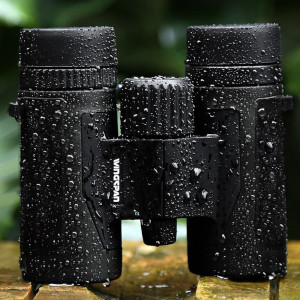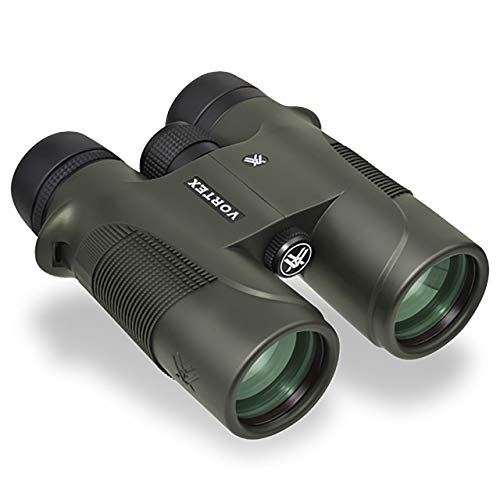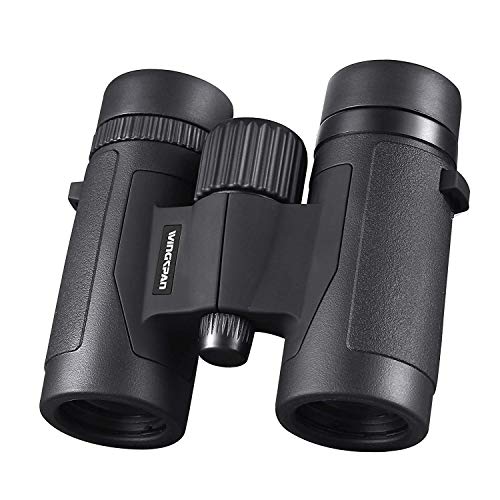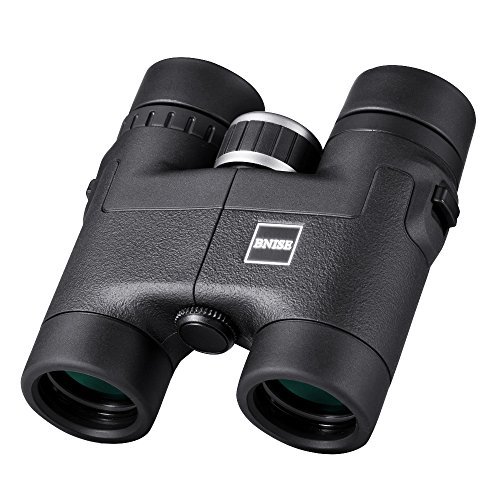5 Best 8×32 Binoculars of 2025 – Top Picks & Reviews
Last Updated on

A good set of basic binoculars is an underappreciated thing. While a set of 8×32 binoculars won’t let you see what’s at the edge of the horizon, they’re good for use in the forest while hiking or just watching birds at the backyard feeder. You can either add another species to your list of birds watched, or know that it’ll try to kill you for getting too close to its nest.
We looked at some of the best 8×32 binoculars available and wrote reviews of them. Feel free to use them as a standalone purchase suggestion sheet, or as a buyers’ guide letting you know what’s good and what’s not so good while researching different models.

A Rundown of our Favorite Pairs in 2025
| Image | Product | Details | ||
|---|---|---|---|---|
| Best Overall |
 |
Vortex Diamondback |
|
CHECK PRICE |
 |
Hawke Sport Optics |
|
CHECK PRICE | |
| Best Value |
 |
Wingspan Optics |
|
CHECK PRICE |
 |
Bushnell Trophy |
|
CHECK PRICE | |
 |
BNISE Binoculars |
|
CHECK PRICE |
The 5 Best 8×32 Binoculars
1. Vortex Diamondback 8 x 32 Binoculars – Best Overall
As a good all-around set of 8×32 binoculars, the Vortex Optics Diamondback is our pick of the litter. It’s got everything you’d want in a great set of binoculars tailored for birdwatching. It has a class-leading field of view at 426-feet/1,000 feet and advanced optics to square anomalies and reduce fogging in wet conditions.
It’s also lighter than its competitors, while still being encased in a rubber coating to reduce internal jarring if dropped.
Naturally, its most serious drawback is the price. You get a lot, so you’re going to pay a lot.
- Lightweight
- Superior field of view
- Great optics
- Expensive
2. Hawke 8 x 32 Sport Optics Binoculars
The Hawke Sport Optics is another great set of 8×32 binoculars. Like the Vortex Optics Diamondback, it’s designed for all-weather operation, and to produce great images that can help settle the question of whether you just saw a downy or a hairy woodpecker.
It has a wide field of view and can focus on things about six feet in front of you. In terms of versatility, that’s just dandy. We also like the grips with hardened construction.
It’s a little heavier than the Diamondback. This, combined with the smaller field of view, is why we dropped it to the runner-up slot. It’s also a little less expensive than our top pick, but still has a bigger price tag than most of the rest of the field.
- Great optics
- Good field of view
- A little heavy
- Pricey
3. Wingspan Optics Spectator 8×32 Binoculars – Best Value
Wingspan Optics has a reputation for making great budget optics, and its Spectator 8×32 binoculars are no exception. They’re well made and have a good field of view, plus at less than a pound, they’re easy to pack along on a hike or canoe trip. We gave them our Best for the Money ranking because they deliver all that while also being affordable on just about every budget.
If this set delivered quality comparable to the more expensive models, it would get ranked higher. In this case, there’s some fall-off in the quality of imaging compared to more expensive binoculars. If you’re really into birding, you might want to look at something sharper. But, for all-around value, it’s hard to quibble with choosing the Wingspan Optics Spectator.
- Superb value
- Well made
- Good field of view
- Lightweight
- Reduced image quality
4. Bushnell Trophy Binoculars (8 x 32 mm)
If you’re looking for a great backup pair of 8×32 binoculars, the Bushnell Trophy is a good contender. They’re inexpensive and have good optics that produce pretty good images. They’re designed for all-weather use and are housed in shock-resistant rubber.
However, we have questions about the long-term viability of these binoculars. They’re rather fragile and seem extra prone to getting knocked out of alignment, despite the rubber armor. At just under a pound, they’re also a bit heavy compared to some of the lighter competition.
They’re great if you want to watch birds at the backyard feeder, but if you want to check the width of the northern flicker’s red band, you might want to consider something that produces crisper images.
- Good secondary binoculars
- Inexpensive
- Fragile
- Heavy
- Reduced image quality
5. BNISE 8 x 32 Binoculars
Sometimes when we assign a bottom-tier ranking to something, it’s a matter of overall bad quality. Sometimes, it’s just one thing. For the BNISE 8×32 Binoculars, it’s just one thing. This set isn’t properly designed for all-weather use. It’s got generally good optics for basic use in everyday life, from going to concerts to watching backyard birds. The images are clean and sharp. It’s also really affordable.
We like all that. What we didn’t like about it is that it’s not suitable for a whole range of things people want to use binoculars for, like taking them on a hike or a paddleboat ride. They aren’t properly sealed, so water can get into them and fog things up pretty easily. The other models we reviewed were sealed better to account for this. They’re also a bit heavy.
- Very affordable
- Good field of view
- Not designed for all-weather use
- Heavy

Conclusion:
If you’re going birding or for a walk in the park, a set of 8×32 binoculars is a great thing to take with you. Among the pairs we wrote reviews about, the Vortex Optics Diamondback was our favorite. It’s a little expensive, but it also provides the best quality. The Hawke Sport Optics Binocular delivered a little less for a little more money, so we gave that our runner-up rank. The Wingspan Optics Spectator is an excellent budget set of binoculars. The Bushnell Trophy is an affordable set of binoculars that would be great as a backup, but maybe not as a primary pair. We would have liked the BNISE 8×32 more, but it’s just not designed for all-weather use.
We hope you found our reviews valuable and helpful in your own search. Either take our suggestions at face value or use the entire thing as a sort of buyers’ guide. Have fun picking the right binoculars, and of course, happy birding.
Related Reads:
- Which is our favorite 8×42 binocular?
- How do you clean a pair of binoculars properly?
- What do all those numbers on a binocular mean?
Table of Contents
About the Author Robert Sparks
Robert’s obsession with all things optical started early in life, when his optician father would bring home prototypes for Robert to play with. Nowadays, Robert is dedicated to helping others find the right optics for their needs. His hobbies include astronomy, astrophysics, and model building. Originally from Newark, NJ, he resides in Santa Fe, New Mexico, where the nighttime skies are filled with glittering stars.
Related Articles:
When Were Binoculars Invented? History, Today & Future
How to Clean a Refractor Telescope: Step-by-Step Guide
How to Clean a Telescope Eyepiece: Step-by-Step Guide
How to Clean a Rifle Scope: 8 Expert Tips
Monocular vs Telescope: Differences Explained (With Pictures)
What Is a Monocular Used For? 8 Common Functions
How to Clean a Telescope Mirror: 8 Expert Tips
Brightfield vs Phase Contrast Microscopy: The Differences Explained








